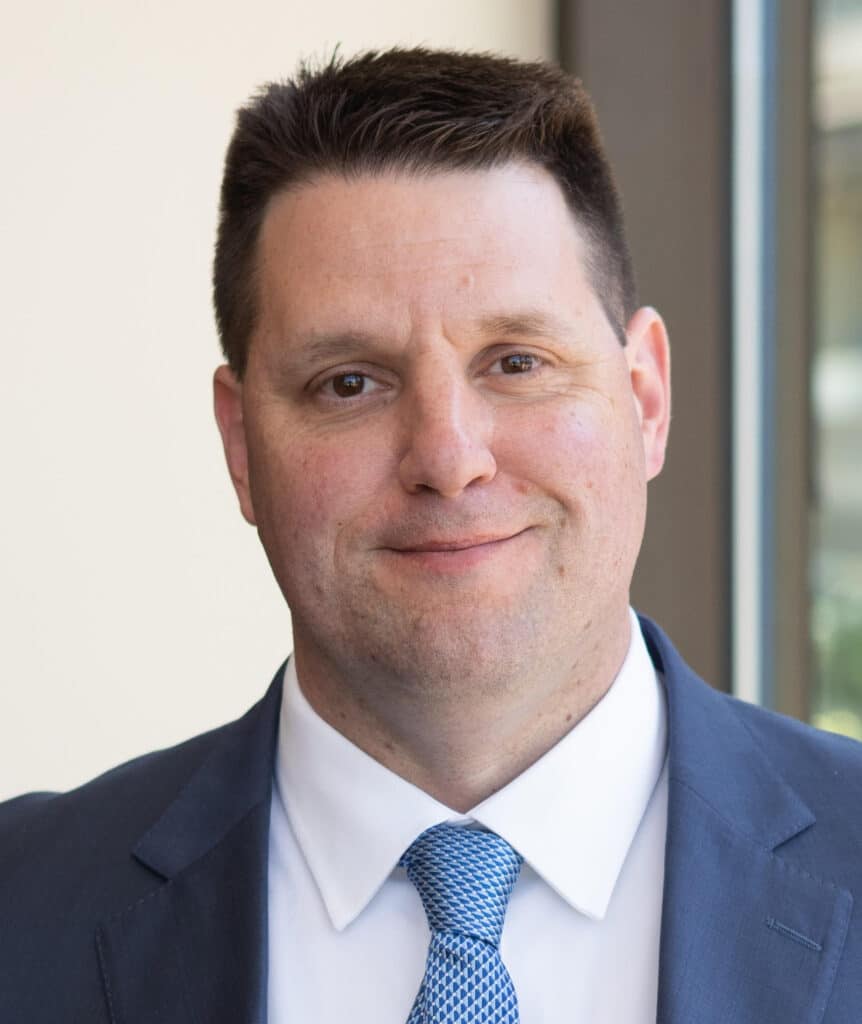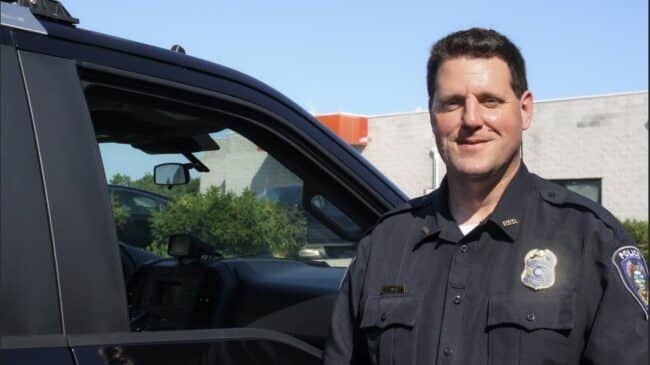When James Small took command of the Palmyra police department in 2015, the Wisconsin village’s public safety agencies were in bad shape. High turnover and the absence of a consistent vision for police, fire, and emergency medical services contributed to poor response times and a lack of public trust. The small town of about 1,800 residents had an annual property crime rate of approximately 44 crimes per 1,000 residents––a high rate for a town of its size. The village also generated a substantial amount of revenue from ticket fines.
Small oversaw the implementation of an innovative public safety program that combined police, fire, and emergency medical services under the new Palmyra Department of Public Safety, with Small becoming Palmyra’s first public safety director. In the time Small has served in this role, the village’s property crime rate has plummeted by 88% to just over five property crimes per 1,000 residents. The village managed to accomplish this feat while simultaneously reducing its fine revenue by more than two-thirds.
Reason Foundation’s Vittorio Nastasi and Austil Stuart recently sat down with James Small to discuss his successes in Palmyra which he credits to an outcome-based policing approach.

Nastasi: Can you describe how Palmyra’s public safety agencies were performing before you were hired?
Small: Things hadn’t gone well in public safety in general for a long time. For both police and fire, there was a real vacuum in leadership. For example, the previous police chief really struggled in his role, was removed by the board, and had not been replaced for 3 years after he was removed. So, we had a police department, we had cars that said ‘police’ on them, and we hired police officers to go out and do police things. But there was no vision beyond that.
Without any clear leadership, the mentality was, “Okay, we’re going to go out and enforce some things.” But there wasn’t any purpose behind that enforcement effort, so officers would go out on the highway in the 25 MPH zone writing speeding tickets. But ultimately, that wasn’t doing anything for the community. There was a high property crime rate that was running about twice the state average, you weren’t seeing things getting prosecuted properly, and there was just a variety of breakdowns in the system.
Nastasi: What was the community’s perception of the police department?
Small: There was a real breakdown in trust in the community. I would go out to introduce myself to the community, and people would just tell me about their awful experiences with the police department. Some people described retaliation for making a complaint about an officer. I don’t think it had gotten as far as some of the excessive use of force cases you see on the news, but it was an escalation of conflict within the community. I think that is something we’re seeing in law enforcement in general, and it’s really a failure from a customer satisfaction perspective.
Nastasi: Writing traffic tickets on the highway was bringing in a lot of revenue for Palmyra, though. Did you get any pushback when you started implementing changes?
Small: The police department was issuing about $90,000 in fines every year, and that would account for about 10% of the village’s budget. Now, did they actually collect $90,000? That’s a different question, but that’s how much they were budgeting for. I think our number last year was about $27,000, so we’re at about 30% of where we started. The revenue issue definitely came up at points with the board. I had a village board member come up to me one time and say, “All these warnings are costing us a lot of money.”
Nastasi: Was reducing fine revenue the goal, or just a byproduct of your mission?
Small: The mission of our department isn’t to raise money. It is to go out and reduce victimization in the community, and we’re doing that extremely well. Reducing victimization required us to change our tactics and stop seeking out enforcement to raise revenue. Some revenue may be generated from some of our work, but it should never be the objective.
I subscribe to what I call an ‘outcome-based strategy.’ I believe our actions should result in our desired outcomes: reducing victimization in the community, improving trust in the police, and creating a sense of community safety. We need to be focusing on facilitating those outcomes. So, we shifted into this problem-solving mindset to move the vision from the police being punishers to the police being facilitators.
I think there is a place for tickets, but I think we’ve seen such an overreliance on punishment. We’ve forgotten that the real goal is to change behavior. We should be asking ourselves, “What can we do to facilitate changing behavior and remove obstacles from this person’s path?”
Nastasi: What does that look like in practice?
Small: Sometimes it involves referring people to the human services system or coordinating with a probation officer––actions you might think of as being beyond the scope of a traditional law enforcement officer. Take somebody, for instance, that had their license suspended because they weren’t paying their fines. What we do in that situation is give that person a 30-day notice from us saying they need to pay their fines. We print out a document from the Wisconsin Department of Motor Vehicles saying what they need to do to get their license reinstated, how much they owe, what court they must go to, and the court’s address. If they need to extend that 30-day notice, that’s fine. We’ll do that if they’ve made progress or set up a payment plan that might take a little longer than our initial deadline. It’s not a free pass. There are consequences on the other end if they don’t pay their tickets, but we’re giving them a chance. Most people take that chance when you tell them what they need to do.
Stuart: Can you describe briefly the decision to consolidate Palmyra’s public safety agencies?
Small: I was hired as the director of public safety providing administrative supervision over the fire and rescue services. I was also hired as the chief of police, and we were going to have a separate fire chief and an emergency medical service director. It was never the plan for me to be the director of all three.
We had a very severe personnel issue in the fire department. I want to say there were eight chiefs in the 15 years prior to my arrival. My initial recommendation to the board was to dissolve the entire fire service agency. We went around and thought about partnering with one of the neighboring agencies. None of them were interested, so that wasn’t going to be an option in our case.
One day one of our board members looked at me and said, “Well, I’ve seen you in a police car, a fire truck, and an ambulance all in the same day. Why can’t we just get more people like you?” My answer was that nobody had done it that way. I mean, this model is out there, but every example of it was created on day one as a consolidated public safety department. Previous efforts to merge two departments on the fly like that hadn’t been successful. By the end of 2017, we had fully implemented the combined public safety model.
Efficiencies gained by consolidating the two budgets together ended up allowing us to add two additional full-time positions. Some of the freed-up funds also absorbed some of the lost revenue from traffic citations. We also trimmed down our vehicle fleet.
Stuart: How did consolidating the departments help you implement your vision?
Small: All our police officers have fire and EMS training, so the staff can fill multiple roles on one call. For example, they may need to take law enforcement action during an EMS call. We were concerned that the public wouldn’t want someone with a jacket that has ‘police’ written on the back in their house for some EMS calls where there might be drugs or something involved. That fear hasn’t materialized. I think that has a lot to do with how our police officers interact with people.
When we’re on an overdose scene, for example, we’re primarily concerned with resolving the medical issue and getting the person whatever treatment they need. Some cases might involve criminal elements that need to be investigated, but by the time we get there, everyone has been cooperative, and they trust the system. Usually, when we take someone like that through the criminal process, it’s to get them to a drug court so they can get into treatment. We work with the district attorney’s office to send them to drug court because giving them a $400 ticket in municipal court isn’t going to change their behavior.
Stuart: Do you think any of Palmyra’s experience could inform other jurisdictions? Palmyra is a relatively small town with a relatively small police force. How scalable do you think your model is?
Small: The combined public safety model can work well in rural communities where call volumes are low enough to share personnel across the agencies. This isn’t a good model for large cities with high call volumes, but the philosophy behind it is scalable. Getting police out of this mindset of punishing people into submission is important because I think that’s one of the problems we’ve seen in the criminal justice system. There is too much emphasis on punishment and not enough on changing behavior. There are people that need to be held in prison because the public needs to be protected from them. But in most cases, we should be looking to solve problems. That’s not just a philosophy for police and fire services, it’s how we should be operating as a government generally. That’s how we build trust. I haven’t received a complaint about an officer in five years. When I first got in, I was getting several a month.
This interview has been lightly edited for clarity.


